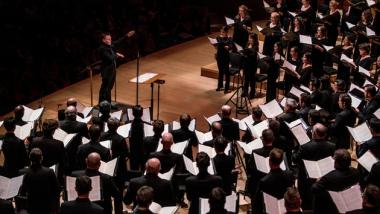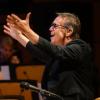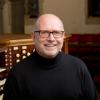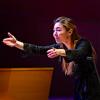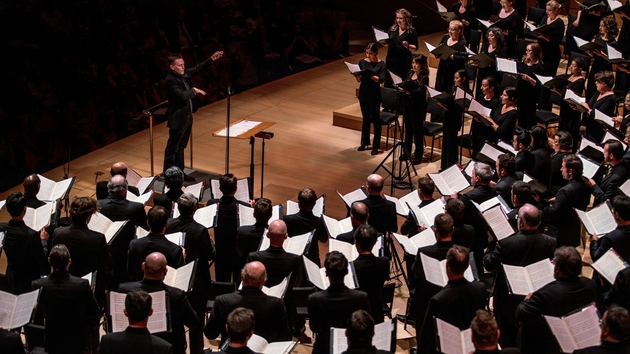
Come December, the Los Angeles Master Chorale usually inundates the halls of Walt Disney Concert Hall with what techies might call a “suite” of holiday programs. This year’s suite contained the usual Messiahs, singalong and not, and Christmas carols for those who didn’t get enough of that stuff piped in at the malls. Yet there was one holiday program Sunday night (Dec. 15) that did depart significantly from the routine — an investigation into some of the many ways in which the 1000-year-old prayer-poem O Magnum Mysterium has been set to music.
In addition, there was the West Coast premiere of a substantial 24-minute choral work on the nativity by Nico Muhly, The Faire Starre, and a sprinkling of other pieces on that subject and other related ones. Artistic Director Grant Gershon tried to establish a recurring narrative that ended up right in the Master Chorale’s wheelhouse with the most famous piece that the organization ever premiered.
The Muhly cantata consists of short settings of two poems by 17th-century poets Thomas Traherne and Richard Crashaw surrounding a much, much longer lullaby with a text by a 14th-century Franciscan friar, John of Grimeston. Scored for string quartet, piano, oboe, English horn, and vibraphone, with occasional pedaled kicks of a bass drum, the cantata proceeds in a slow-moving tread in the first two sections. Only in the third part does the music finally become engaging as Muhly shifts to a quicker minimalist pattern in which the chorus sings pulsating syllables. Thus, in the end, one’s patience was ultimately rewarded.
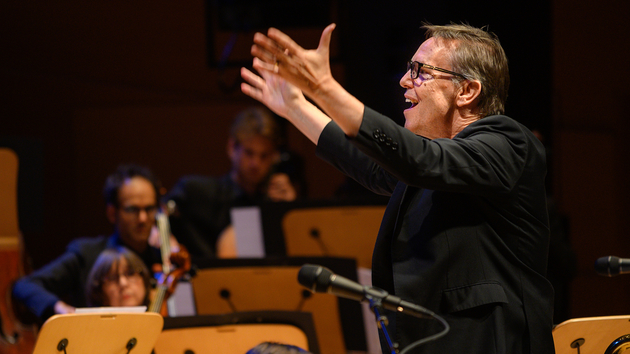
The first O Magnum Mysterium was the angelic, polyphonic setting by Tomás Luis de Victoria from 1572 — which Gershon said was the most popular setting of the text until about 25 years ago (more on that observation later). After intermission, Gershon and the Master Chorale whizzed forward in time to Jennifer Higdon’s 2002 O Magnum Mysterium setting — a striking, glistening piece that employs the tiny, whining sound of two crystal glass harmonicas, plus two flutes, with chimes lighting up the sound at the climax. A third O Magnum Mysterium from 2000 by Venezuelan composer César Alejandro Carrillo struck me as a gentler, slighter work, a bit sentimental in its contemporary harmonies.
At the end of the announced program came the fourth O Magnum Mysterium — and the raison d’être of the evening. Unveiled by the Master Chorale at a Christmas concert 25 years ago, it was the piece that suddenly made Morten Lauridsen a huge name in the choral world — and within the first four chords, you could hear and feel why. Lauridsen had found a zone with this piece, a lived-in, reassuring, peaceful, even mystical harmonic zone that reverberated from head to toes. On Sunday, the Master Chorale gave it a deep, drawn-out rendition. Alone of the many pieces heard before, this one drew awed silence from the audience after its quiet final cadence. Lauridsen, 76, now retired from USC as of this past summer, was then asked to take a seat onstage and listen to the Master Chorale sing his “O Nata Lux” from Lux Aeterna, which continues to explore the zone that he hit upon in O Magnum Mysterium.
Elsewhere, noted former Lauridsen student Dale Trumbore contributed two pieces — Threads of Joy and the lilting Glorious, Glorious, the latter of which sets to music some text from Dickens’s A Christmas Carol. There were also contributions by Dan Forrest (Venite, Adoremus), Matthew Brown (Sweet Was the Song), William Byrd’s Gaude Maria, and a Jasper Randall arrangement of Gustav Holst’s In The Bleak Midwinter.
Finally, the Master Chorale sang a couple of unscheduled holiday standards to close the night, and I labored to get those earworms out of my head so that Lauridsen’s affirmations would reverberate there instead on the drive home.

